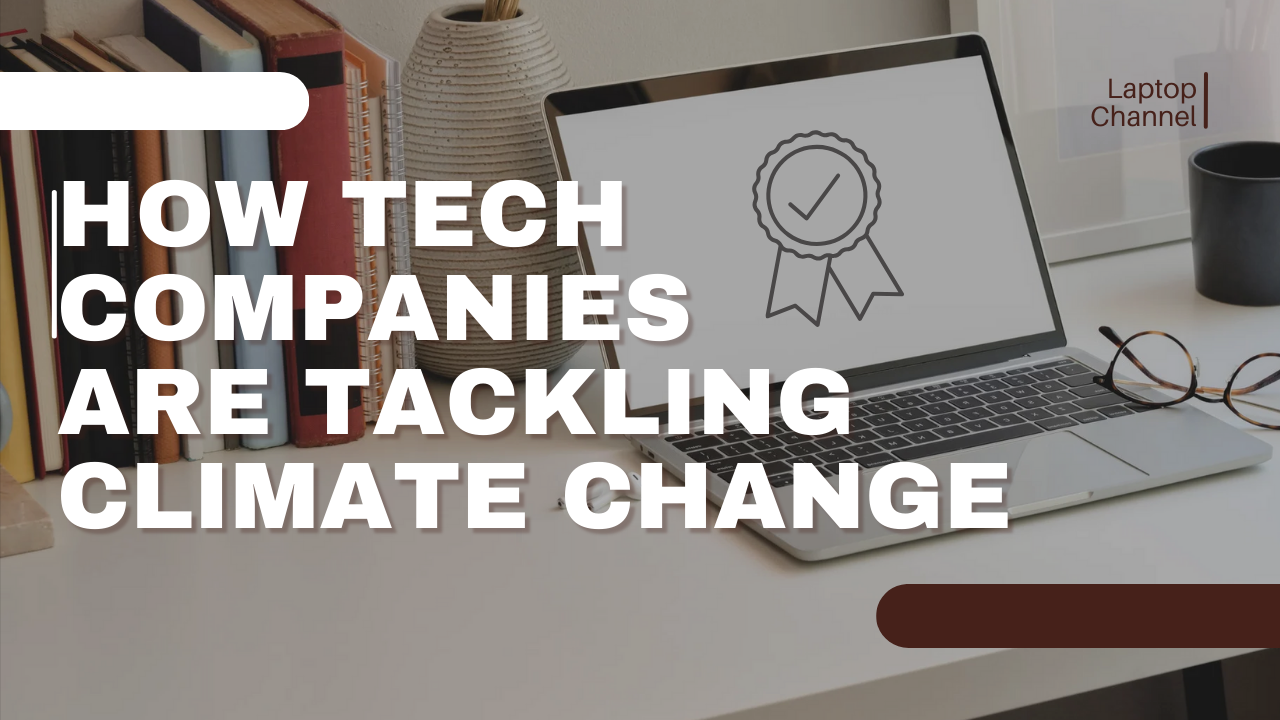One of the biggest problems in the world right now is climate change. Ecosystems, economies, and people around the world are under danger from rising global temperatures, catastrophic weather events, and the destruction of the environment. In response, people, groups, and governments are looking for long-term answers. Technology businesses are some of the most powerful players in this movement. They are using their resources, creativity, and power to tackle climate change head-on.
Tech firms are very important in cutting down on emissions and making the world a greener place. They do this through things like carbon neutrality pledges and cutting-edge clean energy technology. This article talks about how big IT companies are dealing with climate change and making the world a better place to live.
How Technology Can Help Fight Climate Change
Technology can keep an eye on, lessen, and deal with problems associated to climate change. Tech firms may assist lower their own carbon footprints as well as those of their consumers and partners by using AI, cloud computing, big data analytics, and renewable energy solutions.
But the sector itself also adds to emissions. Data centres, making devices, global supply networks, and how much energy users use all have effects on the environment. Tech businesses are in a unique position to lead by example since they play both roles: as contributors and innovators.
Toward a Carbon-Free, Nature-Friendly Future
A lot of the biggest tech businesses have promised to become carbon neutral or reach net-zero emissions in the next ten to twenty years.
Apple became carbon neutral for all of its worldwide business activities in 2020. By 2030, the company wants to make its complete supply chain and product life cycle carbon neutral.
By 2030, Microsoft Corporation says it will have no carbon emissions. This means that it will take more carbon out of the environment than it puts into it.
Google turned carbon-negative in 2007. By 2030, it wants all of its data centres and campuses to run on power that doesn’t produce carbon.
The Climate Pledge was created by Amazon. It says that the company will make it carbon free in 2040 and invites other companies to join in doing the same.
These promises are backed by big investments in renewable energy, long-lasting infrastructure, and programs that help offset carbon emissions.
Putting money into renewable energy
Data locations, workplaces, and institutions run on wind, sunlight, and hydro power electricity at tech companies. This cuts down on their consumption of fossil fuels and helps clean energy businesses develop.
Important things to know:
Google has bought more than 5 gigawatts of renewable energy around the world.
Meta, which used to be called Facebook, runs all of its businesses across the world on 100% renewable energy.
Microsoft is working on server rooms that rely on hydrogen instead of generators powered by diesel.
These investments help bring renewable energy to areas that didn’t have it before and encourage other firms to do the same.
Making and designing products that are good for the environment
Consumer electronics are tied to two big environmental problems: e-waste and resource extraction. In response, tech companies are making products that are better for the environment, can be recycled, and use less energy.
Some of the things that companies are doing are using recycled rare earth elements in their electronics and getting rid of plastic packaging.
Dell and HP provide programs for taking back and recycling old products.
Google is making goods with modular parts so that they are easier to fix and last longer.
Companies may have a far smaller impact on the environment by rethinking the whole product lifecycle, from sourcing to disposal.
Smart Technologies and Green Innovation
In addition to their own policies, IT companies are building tools to help other businesses cut down on emissions. AI, IoT (Internet of Things), and cloud computing are making it possible to manage energy more intelligently, farm in a way that is good for the environment, and build transportation systems that work better.
Microsoft’s AI for Earth program gives money to projects that use AI to solve problems with the environment.
IBM’s Green Horizon project uses artificial intelligence (AI) to provide tools that make it easier to keep track of pollutants and estimate the condition of the air.
The Climate Pledge Fund from Amazon puts money into climate-tech firms that are working on long-term solutions. These companies have an impact outside their own operations by making and supporting technology that focusses on climate change.
Being open and responsible
A lot of tech companies now put out yearly sustainability reports that show how much carbon they release, how much energy they use, and how far they’ve come towards their environmental goals. These reports help people trust a firm, hold it accountable, and let consumers and investors know how well it is doing when it comes to climate change. Third-party audits, environmental certifications (like LEED and Energy Star), and working with environmental groups all help build trust and keep the improvement going.
In conclusion:
The tech business is becoming more and more important as climate change speeds up. Tech businesses are not just sitting back and watching; they are taking big, proactive actions to reduce their influence on the environment and encourage sustainable innovation. These efforts are having a ripple effect that touches businesses, governments, and consumers all around the world. They include becoming carbon neutral, investing in renewable energy, making eco-friendly products, and developing green technologies.
- There are still problems to solve, including controlling emissions from the supply chain and making sure everyone has fair access to green technology. But it’s apparent that technology is an important part of the solution to climate change. Tech businesses can help make a future where economic growth and environmental responsibility go hand in hand by continuing to come up with new ideas and lead the way.

